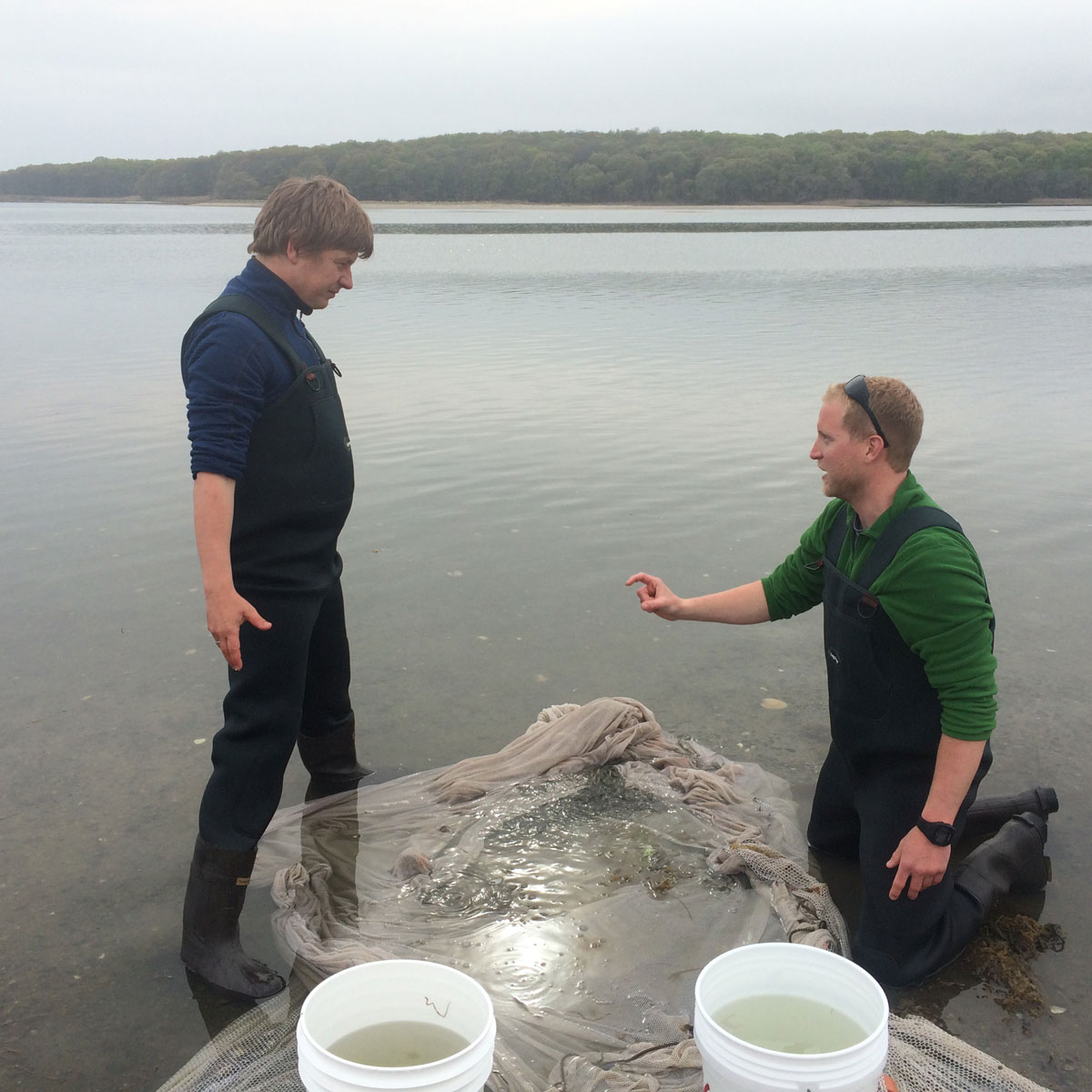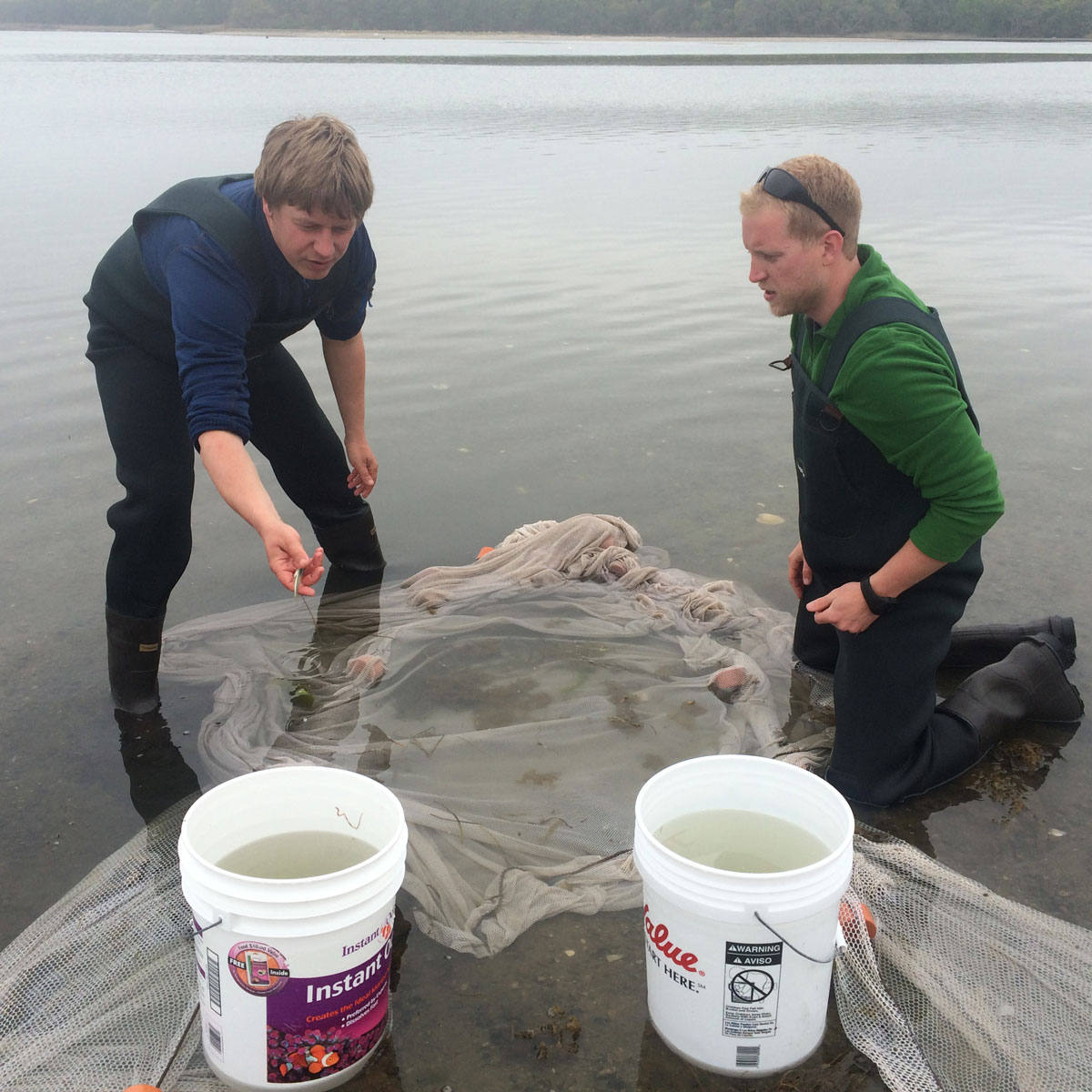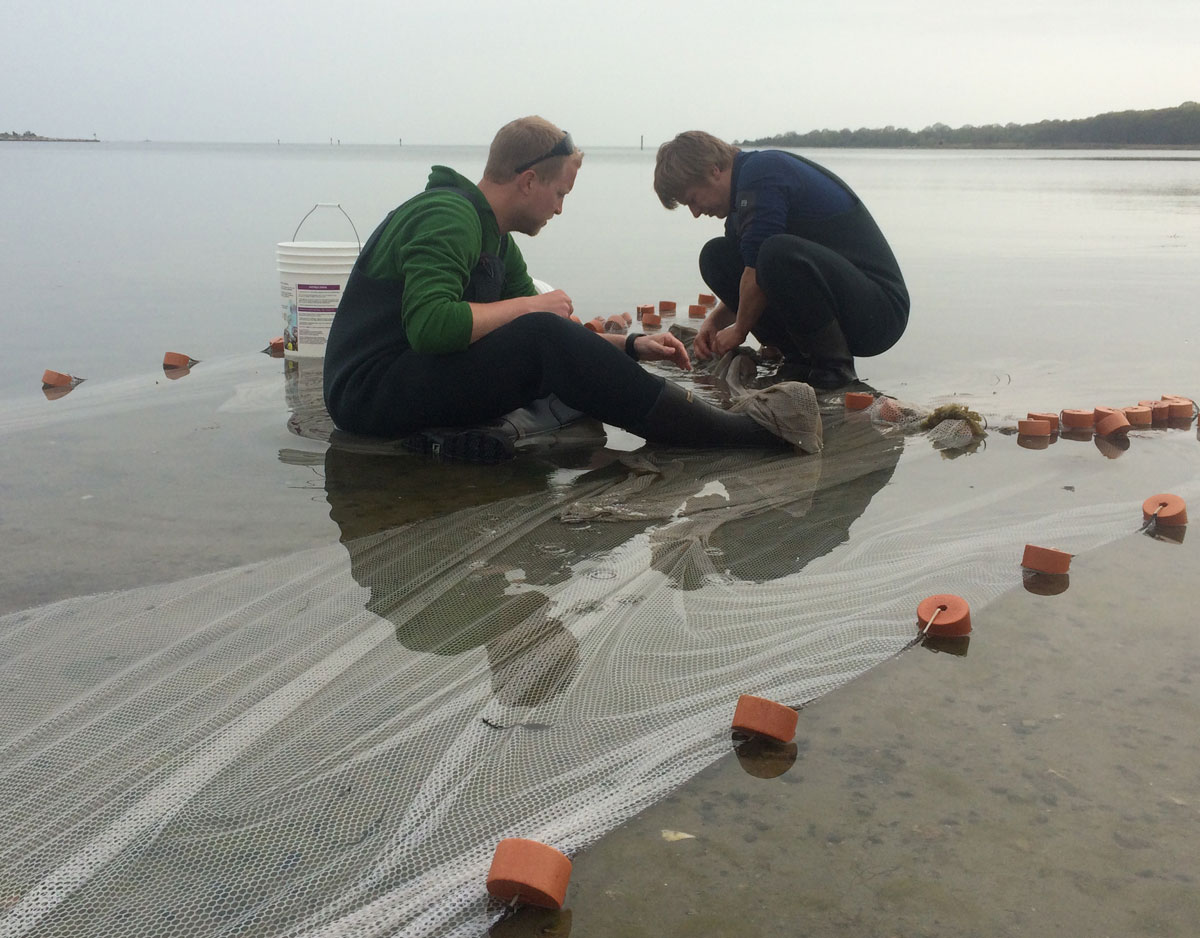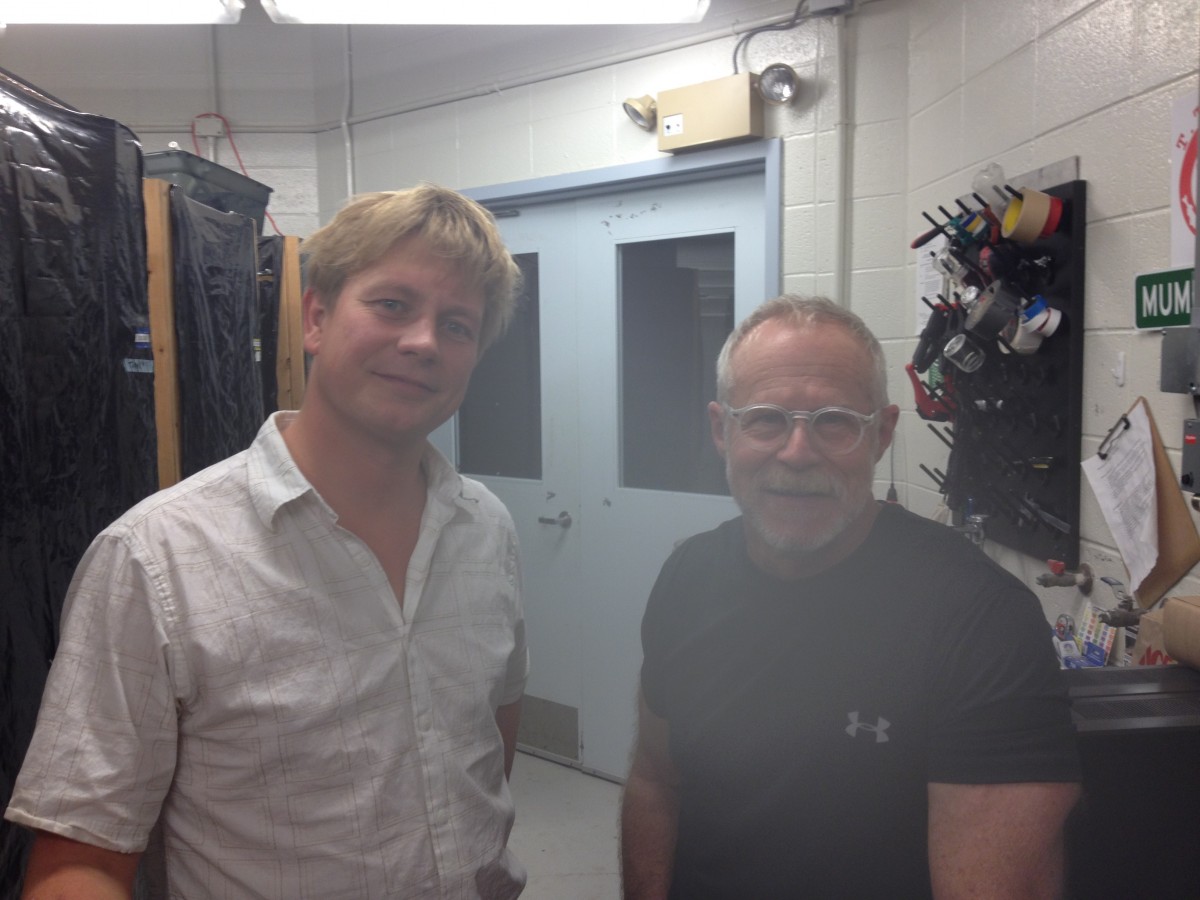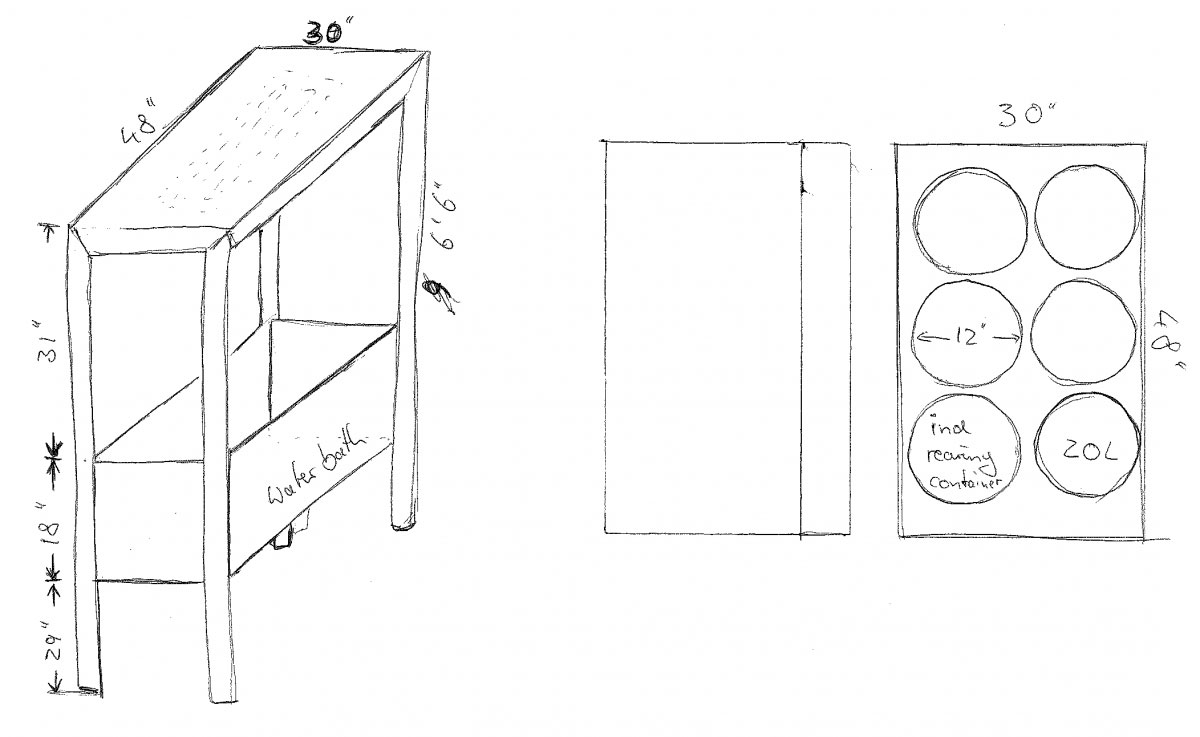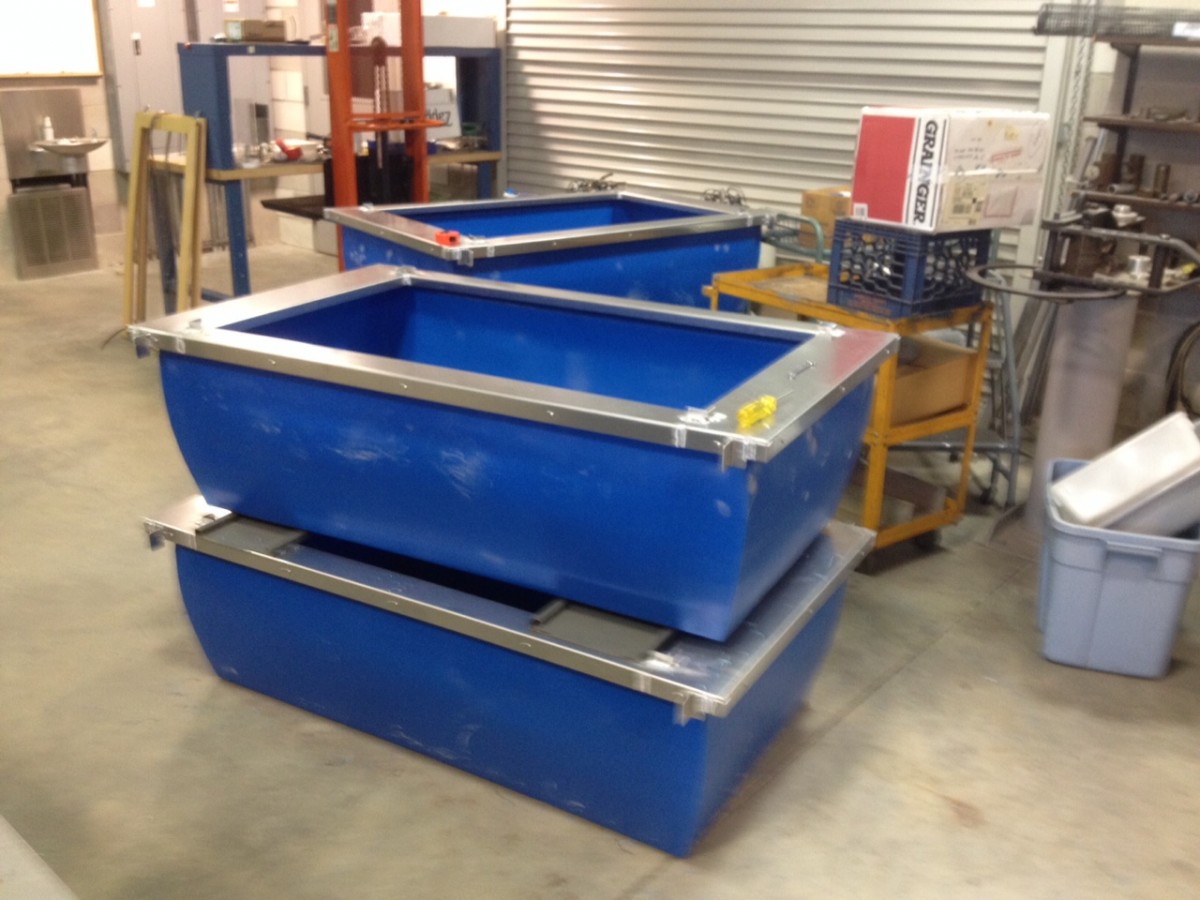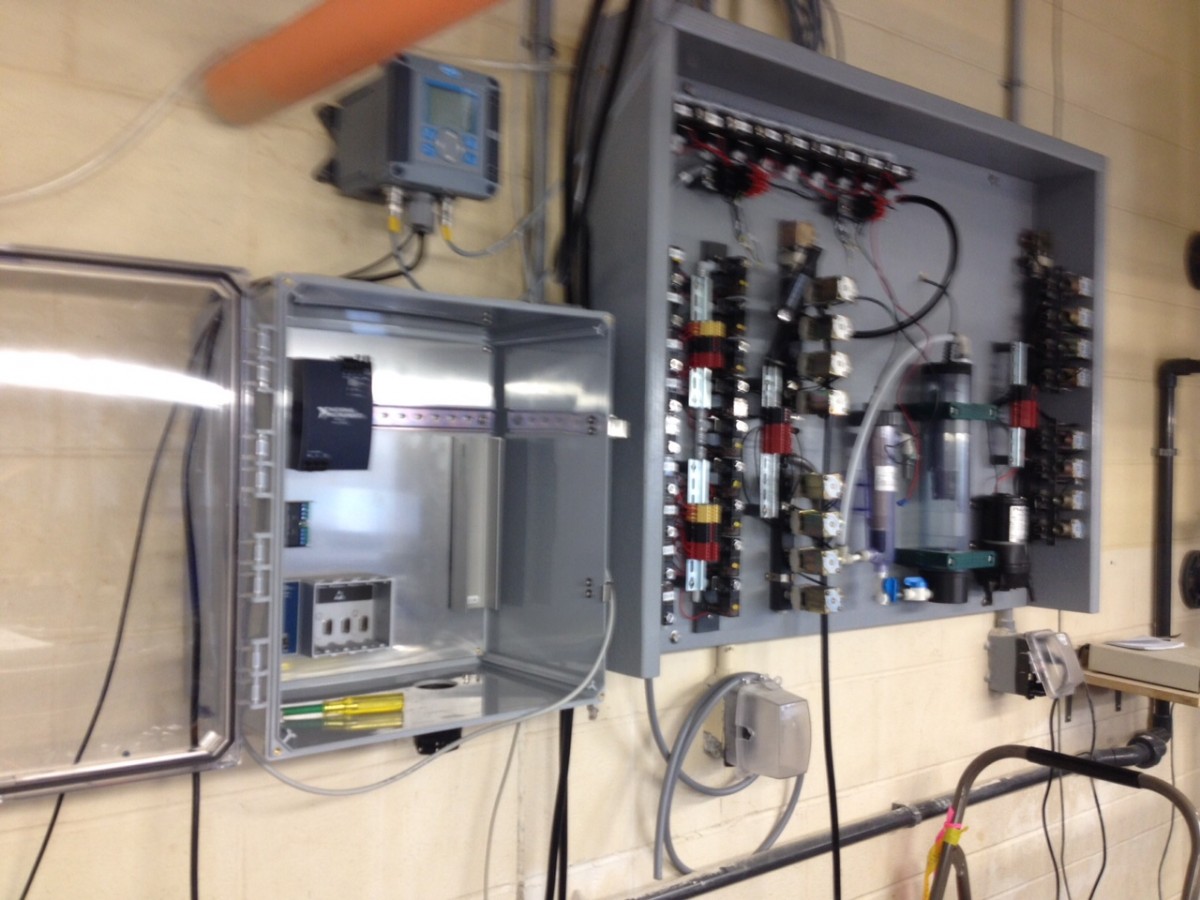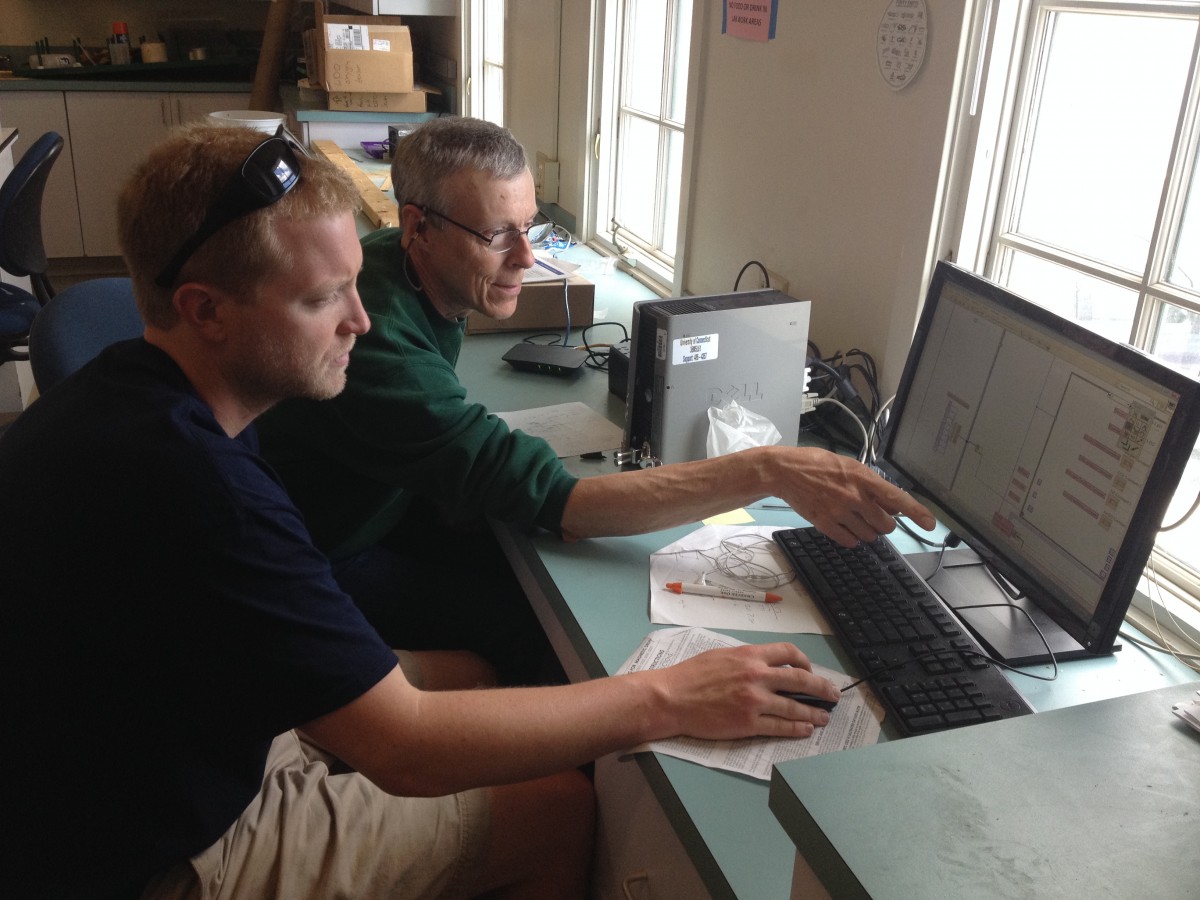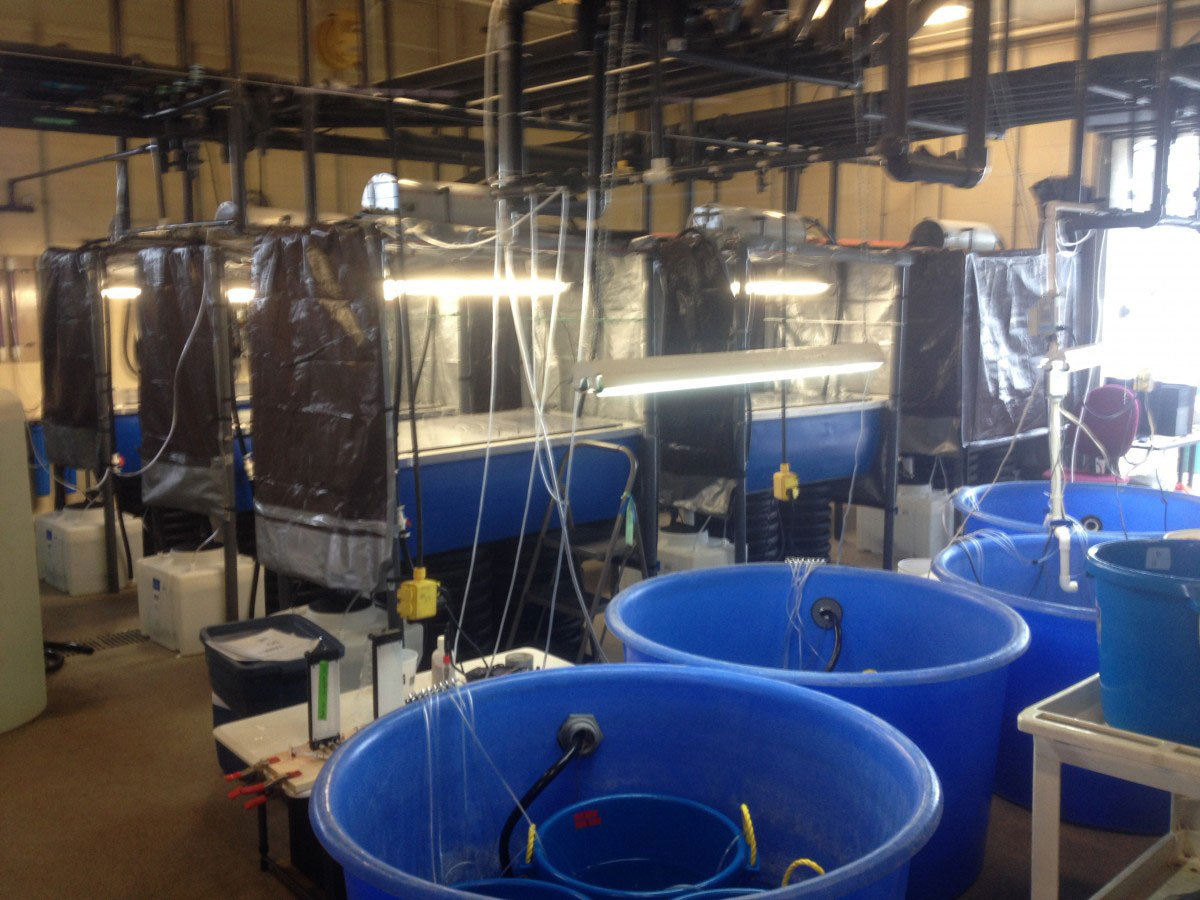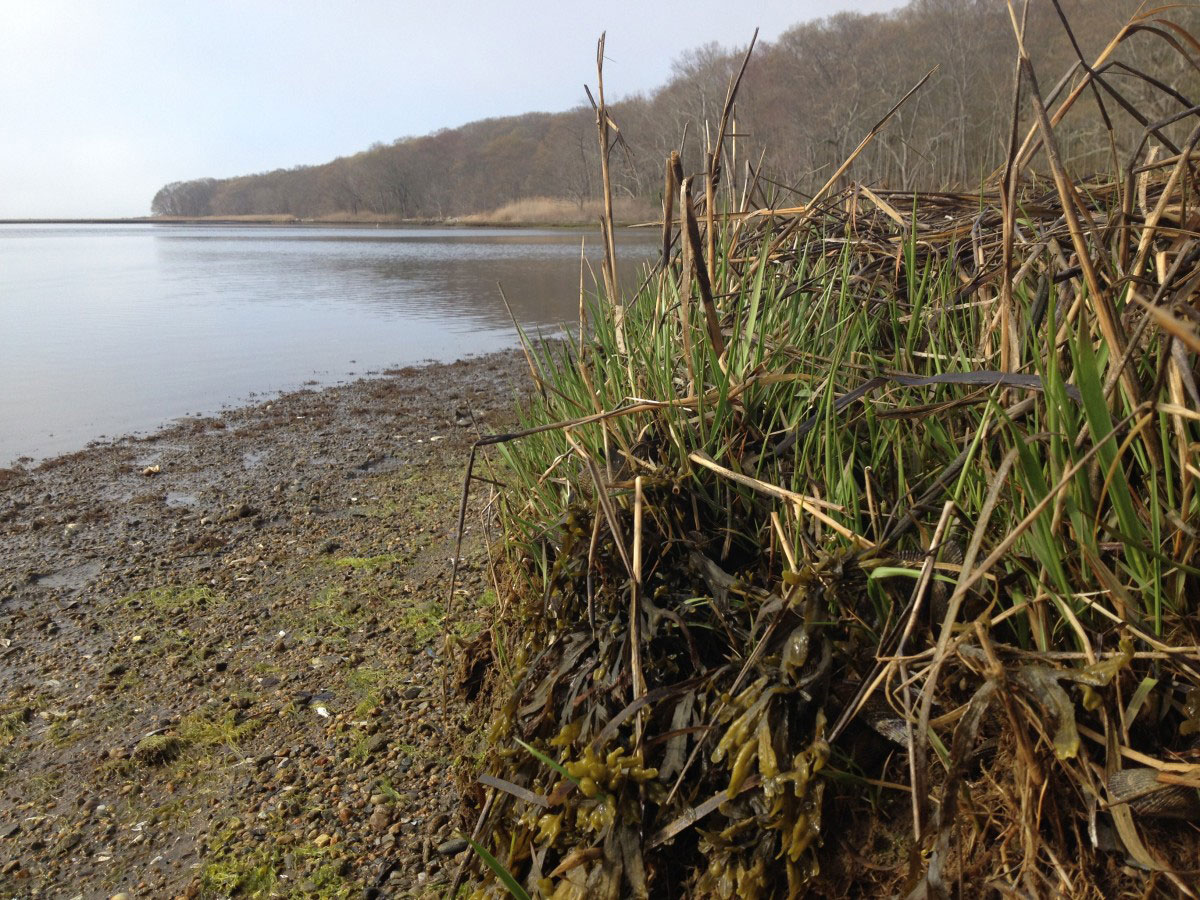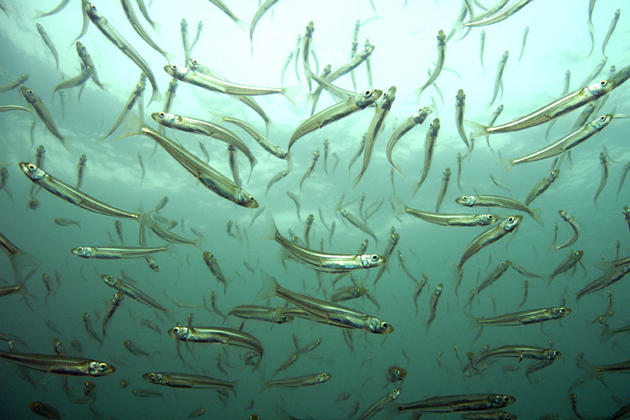Author: Hannes Baumann
[Lab News] Our new rearing system is operational!
– The maiden voyage –
Although it still lacks a proper name, our experimental system to rear larval fish under different temperature, CO2, and oxygen conditions has finally started it’s first real trial with newly fertilized silverside embryos. The system consists of 9 independent units to allow any factorial 3 x 3 combination of rearing conditions. Each unit has a sealed main tank (400L) in which up to six individual rearing containers (20L) can be placed. Water samples from each unit are sequentially pumped past two wall-mounted oxygen and pH sensors, which feed their data into a computer program called LabView (NI), which in turn triggers solenoid valves to add CO2, nitrogen, or air to each system. Although straightforward in principle, the practice of putting all of this together is definitely more complicated and the devil in the detail. All told, the construction took us ~ 8 months, but we hope to be using this system for years from now.
Thumbs up to the many, many persons that were instrumental to the success of this; Paul Grecay and Timothy Targett (University of Delaware) for giving us the crucial inspiration about the general design of a system like that. Gary Grenier and Bob Dziomba from the machine shop for building the big pieces and thinking ahead of details that we certainly would have missed. Charlie Woods for his excellent help and assistance in the Rankin Lab, from plumbing to electrical to simply cheering us up. Dennis Arbige for taking on the tedious wiring of the solenoids without blinking an eye. Finally, many thanks to John Hamilton who’s excellent knowledge of LabView and great teaching skills helped Chris to become a LabView wiz in a matter of weeks!
Ready. Set. Go!
[Lab News] David Conover visits Avery Point and our lab
[Lab News] Spawning season of silversides is here!
On Friday (5/2/2015) afternoon, we went out seining at Mumford Cove and caught the first running-ripe Atlantic silversides (M. menidia) of the 2015 spawning season.
The field and experimental season is now finally here!
Time: 17:30
Temperature: 12 deg Celsius
Dissolved oxygen: 11 mg L-1
pH: 8.2
males/ females: ~70/~60

[New Publication] Combining otolith microstructure and trace element analyses in Pacific bluefin tuna
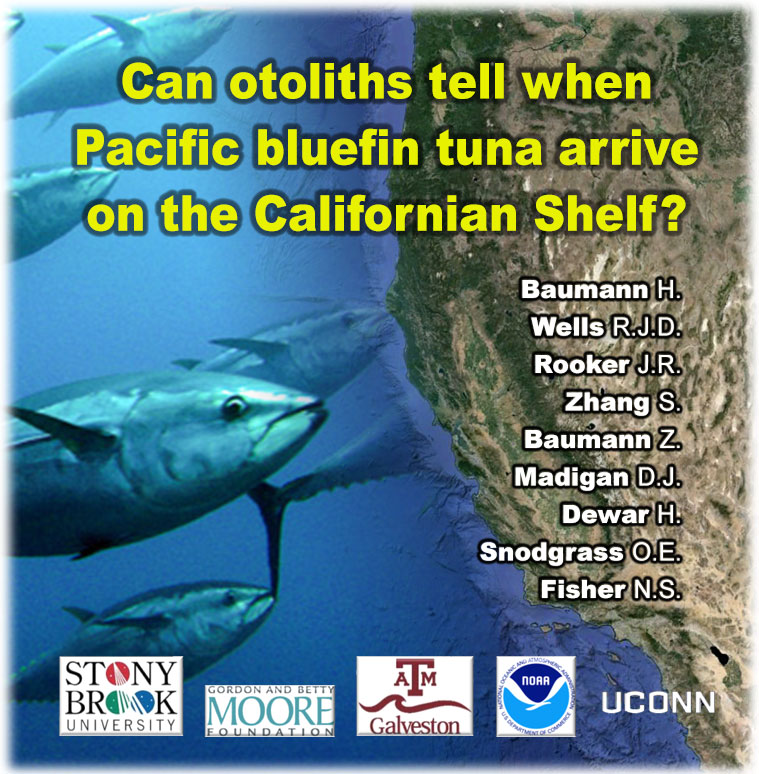
Juvenile Pacific bluefin tuna (PBT, Thunnus orientalis) are known to migrate from western Pacific spawning grounds to their eastern Pacific nursery grounds in the California Current Large Marine Ecosystem, but the timing, durations, and fraction of the population that makes these migrations need to be better understood for improved management. This new study published in the ICES Journal of Marine Science suggests that analyzing the trace elemental composition of bluefin tuna otoliths may divulge the time of arrival of the juvenile fish on the Californian Shelf. Scientists from the University of Connecticut, Stony Brook University, Texas A&M, as well as from NOAA collaborated in this effort, hoping to further develop this method to better inform managers in the future.
Baumann, H., Wells, R.J.D., Rooker, J.R., Baumann, Z.A., Madigan, D.J., Dewar, H., Snodgrass, O.E., and Fisher, N.S. (2015) Combining otolith microstructure and trace elemental analyses to infer the arrival of Pacific bluefin tuna juveniles in the California Current Ecosystem. ICES Journal of Marine Science 72:2128-2138.
[Lab News] Water probe deployed in Mumford Cove
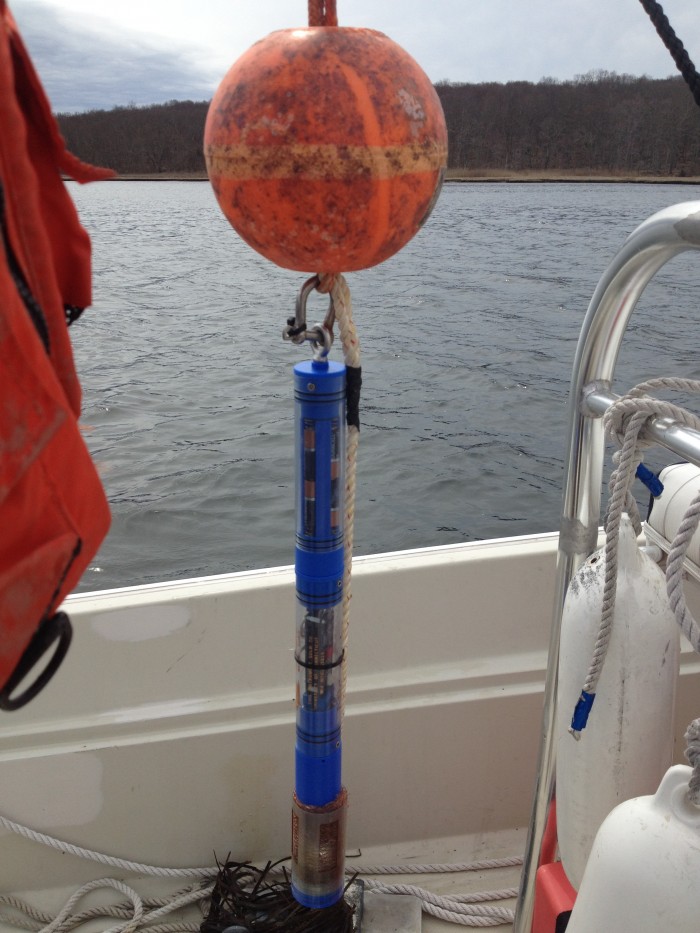


[Science Panel] 24th Annual Long Island Sound Citizens Summit
“Combined effects of low oxygen and low pH on coastal marine organisms”
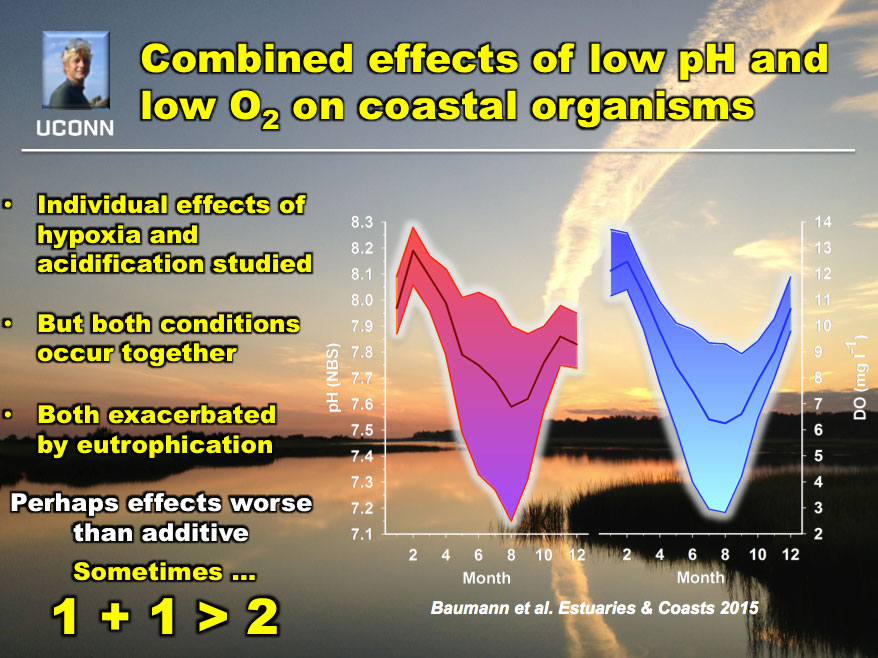
Web: 24th Annual Long Island Sound Citizens Summit
[Campus Talk] H. Baumann talks at Avery Point Global Cafe
“Nets versus Nature: Have we indadvertedly made our fish smaller?”
[Publication] The combined effects of low pH and low oxygen on early life stages of three forage fish

Coastal habitats often experience large diel to seasonal fluctuations in both pH and dissolved oxygen (DO), because ecosystem metabolism consumes oxygen while producing CO2. Hence, the two factors really represent two sides of the same coin. Decades of research have focused on hypoxia or acidification; therefore, the combined effects of these two stressors is still poorly understood. Master student Elizabeth Depasquale and co-authors tested the sensitivity to low pH and low DO in offspring of three forage fish species that are common in nearshore New England habitats: Inland silverside (Menidia beryllina), Atlantic silverside (M. menidia), and sheepshead minnow (Cyprinodon variegatus). The results show that pH and oxygen mostly have additive negative effects, but in a few cases also synergistically negative effects (Fig.1). The latter shows that multistressor experiments are important tools in assessing the impacts of multiple changes on coastal organisms.
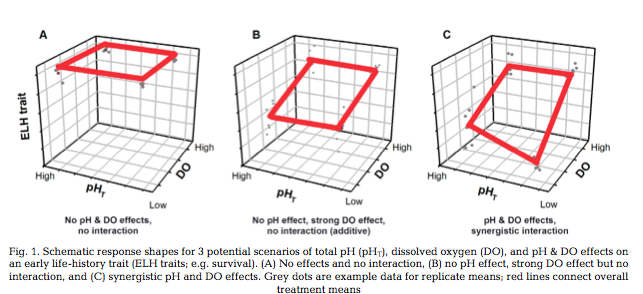
[Press release] Evolving to cope with Climate Change
Publication of Malvezzi et al. Evolutionary Applications (2015) “A quantitative genetic approach to assess the evolutionary potential of a coastal marine fish to ocean acidification”
Originally posted on UConn Today, by Tim Miller
Over the next two centuries, climate change is likely to impact everything from industrial agriculture to the shape of our coastlines. The changing climate will certainly cause huge changes around the world, and the challenge is to predict exactly what impact those changes will have.
In the world of marine science, this means grappling with a process called ocean acidification. As human activity pumps carbon dioxide into the atmosphere, some of the carbon dioxide gets absorbed into the sea, which raises its acidity.
Scientists have been concerned about this for more than a decade, says Hannes Baumann, an assistant professor of marine sciences who studies the phenomenon in his lab at UConn’s Avery Point campus. “The fundamental question,” he says, “is whether or not organisms can adapt to this threat.”
That question is important, because although ocean acidification is happening, it is a slow process. Levels of carbon dioxide in the atmosphere have increased more than 50 percent since the beginning of the Industrial Revolution. They are expected to undergo another four-fold increase, but over the course of the next 300 years.
“Three hundred years is only five or six generations for whales or long-lived sharks,” says Baumann, “or 300,000 generations of single-celled organisms.”
Recent work has thus focused on whether or not species can evolve along with the ocean, adapting over time to the increasing acidity.
Measuring evolutionary potential
In order to answer that question, Baumann and his colleagues turned to a small but important fish, the Atlantic silverside, Menidia menidia. Common across the shallow waters of eastern North America, the silverside is an important food source for aquatic birds like egret and cormorant, as well as commercially important fish species like bluefish and striped bass.
The researchers’ goal was to measure the so-called “evolutionary potential” of this species. It was already known that high levels of carbon dioxide would kill many, but not all, Atlantic silverside larvae. The researchers wanted to know whether the likelihood of surviving had a genetic component: if fish that were related to one another were more or less likely to survive in the new environment.
“We were basically trying to answer the question: Can they evolve?” Baumann says.
His team approached the problem by capturing wild silverside from a beach in Long Island Sound, and raising several groups of their offspring in the lab, some under normal ocean conditions, and some in a more acidic environment.
They then tracked how long each of the fish lived, and analyzed their DNA, looking for what are called “microsatellites” – the same repetitive strands of DNA that are used in human paternity tests. The analysis revealed which fish were related to one another.
The team found that related fish had similar lifespans, suggesting that there is indeed a significant genetic component to survival in an acidic ocean. This means that the fish does have the potential to evolve, a finding which may have important ramifications for predictions about how the ocean environment will change with the changing climate.
Baumann, who recently joined the faculty at UConn after an appointment at Stony Brook University, was enthusiastic about the result, primarily because it demonstrates a method by which the evolutionary potential of other species can be measured.
“This is an experiment that can be performed in one generation,” he says. He is hopeful that the results will prove useful in predicting how oysters, sea urchins, and a host of other marine organisms will be able to cope with the changing ocean environment.
The research was first published Feb. 14 online, and will appear in the March issue of the journal Evolutionary Applications.
This work was made possible by grants from the National Science Foundation (NSF) and the National Oceanic and Atmospheric Administration (NOAA).
Web coverage: UConn Today | NSF | OceanBites | ScienceDaily | AAAS EurekAlert | EnvResearchWeb | Phys.org | ScienceWR

